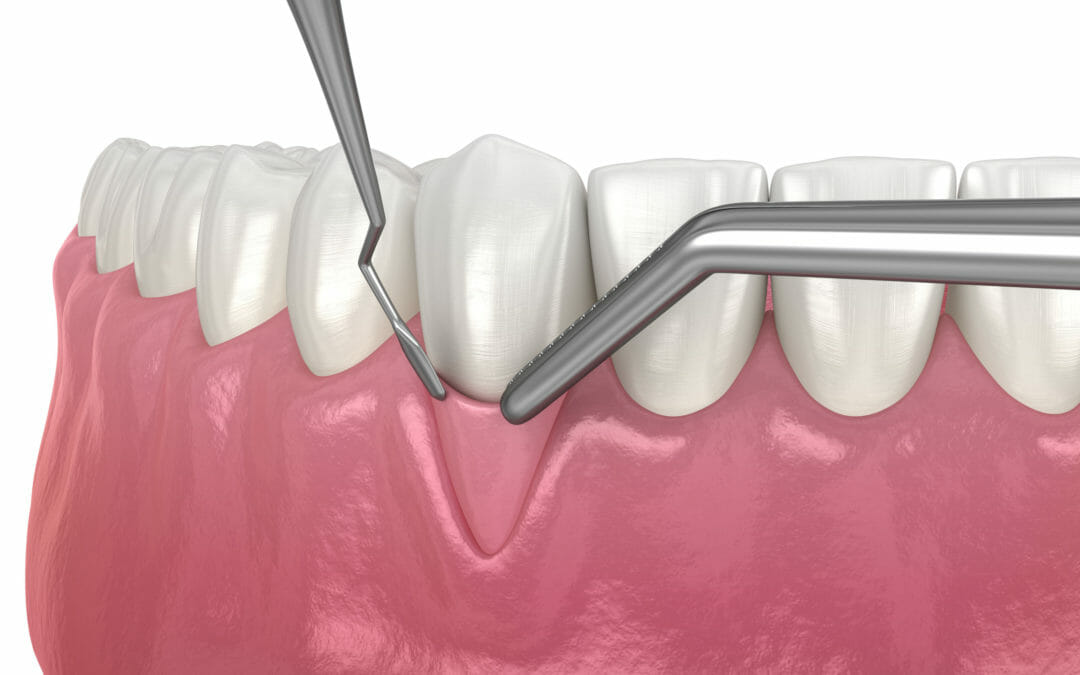There are a number of reasons that a patient’s gums might recede or get thinner. This is a common problem that can cause a lot of issues for both the gums and teeth. If you have gums that are getting smaller for any reason, your dentist may recommend that you see us to get gum graft surgery. There are many things to know about gum graft surgery so that you know what to expect and how the surgery will help you.
When a patient gets a gum graft, more gum tissue is added to the area so that the exposed roots of the teeth are covered. Having exposed roots can make your teeth extra sensitive, and getting a gum graft can help significantly with this and other dental problems. A gum graft adds more volume to the tissue at the gum line so that your oral health is improved. It generally takes one to two weeks to recover from this surgery. Getting it done can reduce the risk of developing serious gum disease.
Gum Recession
This is a form of dental surgery that treats patients for their receding gums. When gums recede, they pull away from their normal position around the teeth. This allows the roots that would normally be under the gums to be exposed. When this happens, you will have a much higher risk of tooth sensitivity, tooth decay, and even the loss of bone around your teeth. If you’ve lost gum tissue, a gum graft can replace it so that your oral health is improved.
It’s the dentist who will notice the gum recession and recommend that you get a gum graft. When gums are receding, this may indicate that you have serious gum disease, but it may also be a genetic predisposition to have gums that get thinner over time. Gum recession can also be caused by brushing your teeth in a way that’s too aggressive.
Getting Gum Graft Surgery
Among the periodontal (gum) procedures that are commonly done, gum grafting is highly common. It’s one of the more common of these procedures that are done in the U.S. When you see the periodontist for your gum recession, they will look at your gums and assess how healthy they are. They will look at the pockets that have opened up around your teeth and will measure them. They will also measure the recession that has happened around each affected tooth. If the situation is a severe one, they will talk with you about getting gum graft surgery to repair the damage.
There are different ways that this surgery can be done. One of the most common ways to perform it is to take some tissue from the roof inside your mouth and to attach that tissue to the area that has been receding. In some surgeries, a substitute material is used that is not from inside your body. When you return for your gum graft surgery, you will have local anesthesia to numb the areas that will be affected. There is also sedation dentistry available for those who want it. There are different types of sedation available, including IV sedation and nitrous oxide. You can find out about your options during your consultation and choose the best one for you.
The surgery is performed with you comfortably and relaxed the whole time. Part of the process is to give you a thorough cleaning of the roots of the affected teeth. Then, the surgery will be performed, and the surgical site will be closed. You might have stitches that will dissolve on their own, or you may get stitches that need to be removed when you come for your follow-up appointment. The time it takes depends on the extent of your gum recession. If the recession is just around one tooth, you can expect the surgery to take about one hour. If there are multiple teeth involved, it will take longer.
After the Surgery
If you had sedation during your surgery, you will need someone there with you who can drive you home afterward. Because you were numbed by the local anesthesia and perhaps a form of sedation, you won’t have any feelings in the area during the surgery. Once it’s over and the anesthesia has worn off, you may have some mild soreness, but you will have instructions about how to take care of it. You will also have instructions about how to take care of the affected areas. You will likely have dressing and gauze at the surgical site. Make sure that you don’t remove it before the instructions say to do so. For the gauze, this is usually about half an hour. The dressing might come out by itself within a couple of days, or it may be removed when you have your follow-up visit.
Make sure that you look over the instructions before you leave and ask the surgeon any questions you have. We want you to be comfortable and heal quickly. If you have questions later, you can call the office. When you follow the post-surgical instructions, you will help yourself to feel better and to heal without any problems. Make sure to avoid brushing or flossing the affected areas until the surgeon says that you can. You will generally have your follow-up visit about a week after your surgery. You may have other follow-up visits as well. Once you’re healed, you will have less tooth sensitivity and less risk of a number of problems that can come from gum recession. You may also find that you’re happier with the way your smile looks.
When you need gum graft surgery, we’re here to provide you with a comfortable experience that improves your dental health. Call us at DFW Oral Surgeons when you need to have a gum graft.

